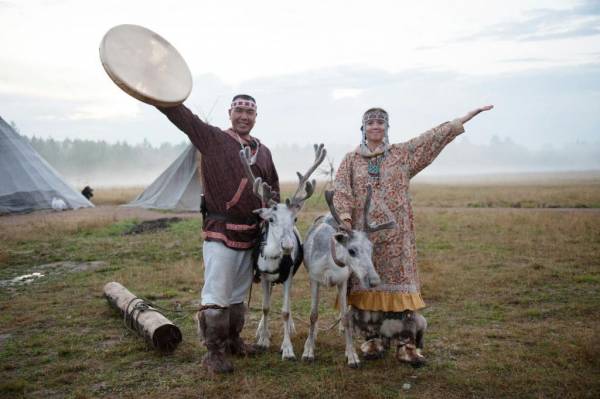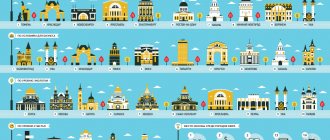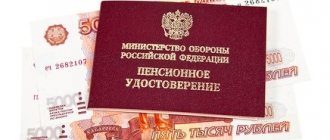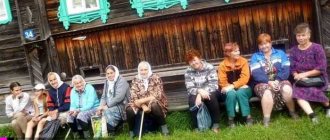Law for the benefit of the employer
Olga Yakushina
Tax expert-journalist
Current as of April 19, 2019
The regions of the Far North are characterized by harsh climatic conditions. The legislation of our country provides for a number of compensations for harm received by workers in the Far North and equivalent areas. In the article you can find a list of such areas.
Which areas belong to the Far North in 2019?
The list of regions of the Far North and equivalent areas was defined in the USSR - by Resolutions of the USSR Council of Ministers dated November 10, 1967 No. 1029 and January 3, 1983 No. 12.
In 2020, the list of regions of the Far North includes the following territories:
- All islands of the Arctic Ocean and its seas, as well as the islands of the Bering and Okhotsk seas;
- Murmansk region - completely;
- Arkhangelsk region - only the following territories: Nenets Autonomous Okrug, the city of Severodvinsk, Mezensky, Leshukonsky, Pinezhsky districts;
- Komi Republic - the cities of Vorkuta and Inta, the districts of Usinsky, Izhemsky, Ust-Tsilemsky, Pechora, the village of Ust-Lyzha with its subordinate territory;
- Tyumen region - Yamalo-Nenets Autonomous Okrug;
- Krasnoyarsk Territory - Taimyr (Dolgano-Nenets) and Evenki Autonomous Okrugs, the cities of Igarka and Norilsk, the North Yenisei and Turukhansky districts;
- Irkutsk region - Katangsky district;
- Republic of Yakutia - completely;
- Chukotka Autonomous Okrug - completely; Magadan region - completely; Kamchatka Territory - completely;
- Republic of Karelia - the city of Kostomuksha, Belomorsky, Kalevalsky, Kemsky, Loukhsky districts;
- Khabarovsk Territory - Ayano-Maisky and Okhotsk regions;
- Sakhalin region - the city of Okha, the districts of Kuril, Nogliki, Okha, North Kuril and South Kuril;
- Republic of Tyva - Mongun-Taiginsky, Todzhinsky, Shynaan rural administration districts of the Kyzyl district;
- Khanty-Mansiysk Autonomous Okrug - Berezovsky, Beloyarsky districts.
If it is indicated that a city belongs to the “extreme northern” area, then the territories subordinate to this city also belong to the regions of the Far North.
Retirement procedure for the female population of the northern territories
In order for a woman to retire early, she must accumulate twenty years of insurance coverage, at least fifteen calendar years of work experience (from 2020) and reach 50 years of age. If there are two or more children, the work experience may be twelve calendar years.
If a woman has worked for at least twenty years as a reindeer herder, hunter or fisherman (with permanent residence in the Far North), she can retire at the age of 45.
Which areas are considered the Far North in 2019?
The list of areas that are considered the Far North in 2019 is much broader. It includes districts and settlements on the territory of the following constituent entities of the Russian Federation:
- Arkhangelsk region - the cities of Arkhangelsk, Novodvinsk, Onega, Mirny, Kotlas, Koryazhma, the districts of Plesetsky, Primorsky, Onega, Kholmogorsky, Vinogradovsky, Verkhnetoemsky, Lensky, Velsky, Vilegodsky, Kargopolsky, Konosha, Kotlassky, Krasnoborsky, Nyandomsky, Ustyansky, Shenkursky;
- Komi Republic - the cities of Ukhta, Syktyvkar, the districts of Vuktylsky, Sosnogorsky, Troitsko-Pechorsky, Udorsky, Knyazhpogostsky, Koygorodsky, Kortkerossky, Priluzsky, Syktyvdinsky, Sysolsky, Ust-Vymsky, Ust-Kulomsky;
- Perm region - Gainsky, Kosinsky, Kochevsky districts;
- Republic of Karelia - the cities of Petrozavodsk, Sortavala, districts Muezersky, Segezhsky, Kondopoga, Lakhdenpokhsky, Medvezhyegorsky, Olonetsky, Pitkyaranta, Prionezhsky, Pryazhinsky, Pudozhsky, Suoyarvsky;
- Khanty-Mansiysk Autonomous Okrug - Yugra: all, except Berezovsky and Beloyarsky districts (belong to the territories of the KS);
- Tyumen region - Uvat district;
- Tomsk region - the cities of Kolpashevo, Strezhevoy, the municipal formation "Kedrovy City" of the Tomsk region (Kedrovy, Pudino village, Ostanino, Kalininsk, Rogalevo, Tavanga, Lushnikovo villages), Aleksandrovsky, Bakcharsky, Verkhneketsky, Kargasoksky, Kolpashevo, Krivosheinsky districts, Molchanovsky, Parabelsky, Chainsky, Teguldetsky;
- Krasnoyarsk Territory - the cities of Yeniseisk, Lesosibirsk, Boguchansky, Yeniseisky, Kezhemsky, Motyginsky districts;
- Irkutsk region - the cities of Bodaibo, Ust-Ilimsk, Ust-Kut, Bratsk, districts Bodaibinsky, Bratsky, Kazachinsko-Lensky, Kirensky, Mamsko-Chuysky, Nizhneilimsky, Ust-Ilimsky, Ust-Kutsky;
- Republic of Buryatia - Bauntovsky, Severo-Baikalsky, Barguzinsky, Kurumkansky, Muisky districts;
- Chita region - Kalarsky, Tungiro-Olekminsky, Tungokochensky districts;
- Amur region - the cities of Zeya, Tynda, Selemdzhinsky, Tyndinsky districts;
- Primorsky Territory - the districts of Dalnegorsky, Kavalerovsky, Olginsky, Terneysky, the working village of Vostok of the Krasnoarmeysky district, Boguslavetsky, Vostretsovsky, Dalnekutsky, Izmailikhinsky, Melnichny, Roshchinsky and Taezhnensky village councils of the Krasnoarmeysky district;
- Khabarovsk Territory - the cities of Amursk, Komsomolsk-on-Amur, Nikolaevsk-on-Amur and Sovetskaya Gavan, the working village of Elban of the Amur region, Voznesensky, Padalinsky village councils, Amur region, Achansky, Dzhuensky, Omminsky village councils of the Amur region, Vaninsky, Verkhnebureinsky, Komsomolsky districts , Nikolaevsky, named after Polina Osipenko, Sovetsko-Gavansky, Solnechny, Tuguro-Chumikansky, Ulchsky;
- Sakhalin region - the entire territory, with the exception of areas listed in the list of regions of the Far North;
- Republic of Tyva - the city of Kyzyl, districts Bai-Taiginsky, Barun-Khemchiksky, Dzun-Khemchiksky, Kaa-Khemsky, Kyzylsky (except for the territory of the Shynaan rural administration), Ovursky, Piy-Khemsky, Sut-Kholsky, Tandinsky, Tes-Khemsky, Chaa -Kholsky, Chedi-Kholsky, Ulug-Khemsky, Erzinsky;
- Altai Republic - Ulagansky district.
If it is indicated that a settlement belongs to an area equated to the Far North, then the territories subordinate to this settlement also belong to the “equated” regions.
Shift worker work: requirements for employment
What requirements are necessary to work in the Far North? Considering that the conditions in such regions are harsh, first of all it is necessary to have excellent health. Experience in a specialty in a temperate climate is also desirable. Relearning and starting everything from scratch in permafrost areas is not the most reasonable option. No less important is the fact of the ability to conduct documentary work with papers. For example, a foreman at a construction site takes up about eighty percent of paperwork.
Once a year, all workers must undergo a special medical commission, after which they are issued an official document stating that they are fit to work in the Far North. After the employer has agreed to hire you, you will be asked for your Taxpayer Identification Number and Labor Identification Number, that is, the preparation of such documents for shift workers is done by those who have expressed a desire to work.
Living conditions for people
The cities, towns and regions of the Far North are not very densely populated. There are about 12 million people here. The total area of such territories is twelve million square kilometers, which is almost seventy percent of the entire territory of the Russian Federation. Among the population there are both indigenous peoples of Siberia and the Far East (Karelians, Komi, Yakuts, Buryats, Markovians, Russian-Ustyinians, Pokhodchane, Yakutians), and temporary visitors.
Indigenous people are more adapted to climatic conditions, more morally resilient and tolerate life in permafrost much easier. Scientists have proven the existence of “polar tension syndrome.” Basically, it manifests itself in those who come for a short amount of time (up to three months). Psycho-emotional changes can begin due to being in too high latitudes and in northern climates. Changed metabolic processes can also have a negative effect on the psyche.
The Far North has strong geomagnetic disturbances, which lead to changes in the oxidative processes of the human body and to structural perturbations of cell membranes. This means that cells experience oxygen starvation, their reaction processes to external stimuli are inhibited and the functioning of receptors is disrupted. Sometimes a general metabolic disorder occurs in all internal organs, and the brain and central nervous system begin to suffer. A person develops symptoms of fatigue; he is tense from the moment he wakes up until he goes to bed. He also slows down the process of information perception and thought processes.

Such difficulties arise especially often during the polar night, when darkness lasts around the clock. If a shift worker comes to the Far North during this period, then in principle he will not be able to adapt to the conditions. Moreover, all hidden diseases that he did not even imagine may worsen.
Links
- List of regions of the Far North and localities equated to regions of the Far North, approved by a resolution of the Council of Ministers of the USSR of November 10, 1967, with corrections and additions.
- List of regions of the Far North and localities equated to regions of the Far North, which are subject to the Decrees of the Presidium of the Supreme Soviet of the USSR dated February 10, 1960 and September 26, 1967 on benefits for persons working in these areas. (unavailable link)
- Which areas are equated to the regions of the Far North
- Pension provision for northerners
Notes
- ↑ 123
Tarakanov M. A. Evolution of the spatial localization of the concepts “Far North” and “North” in Russia // National interests: priorities and security. - Vol. No. 26 / 2010. - pp. 32-41. - List of regions of the Far North and localities equated to regions of the Far North, approved by a resolution of the Council of Ministers of the USSR of November 10, 1967, with corrections and additions.
- in accordance with Article 82.1 of the Federal Law of October 6, 2003 No. 131-FZ “On the general principles of organizing local self-government in the Russian Federation.”
- Decree of the Government of the Russian Federation of May 23, 2000 No. 402 “On approval of the list of regions of the Far North and equivalent areas with limited terms for the delivery of goods (products).”
- By Decree of the Government of the Russian Federation dated 03.03.2012 N 170 “On the classification of the Berezovsky and Beloyarsky districts of the Khanty-Mansiysk Autonomous Okrug - Ugra as regions of the Far North”, the Berezovsky and Beloyarsky districts of the Khanty-Mansiysk Autonomous Okrug - Ugra from 01.01.2013 are classified as regions of the Far North .
- This “equation” was made for the following reasons:
- Some areas do not legally belong to the Far North, but the local climate is no less harsh.
due to the remoteness and inaccessibility of these places.
- Intensive industrial development of new territories began, and a great need for workers arose. An “incentive” for attracting new “workers” could be increased wages and benefits provided.
- The Shantar Islands administratively belong to the Tuguro-Chumikansky district and are a region of the Far North.
- Law of the Russian Federation of February 19, 1993 No. 4520-1 “On state guarantees and compensation for persons working and living in the Far North and equivalent areas” (with amendments and additions)
- Resolution of the Council of People's Commissars of the RSFSR dated October 26, 1932 "On establishing the territory covered by the resolution of the All-Russian Central Executive Committee and the Council of People's Commissars of the RSFSR dated May 10, 1932 on benefits for persons working in the Far North."
- Decree of the Presidium of the USSR Armed Forces dated October 3, 1942 “On stopping the calculation of percentage bonuses to the wages of workers and employees and providing them with other benefits related to work in remote areas.”
- Decree of the Presidium of the USSR Armed Forces dated August 1, 1945 “On benefits for persons working in the Far North”
- Analysis of the current situation of isolated power supply systems with high energy costs
- Andrey Treyvish.
Russia: population and space. Too much north. - Demoscope Weekly, 1 - January 19, 2003. - No. 95-96.
What you need to know about working in the far north before signing a contract
Typically, the quality of work performed depends on colleagues. That is, a good team of professionals will be a plus. But not everyone can withstand such serious conditions. The problem may not only be frosts and winds, but also the fact that these climatic conditions (especially days and nights lasting six months) have a depressing effect on the nervous system. Because of this, squabbles and quarrels may occur in teams.
But the landscapes here are beautiful in their own way. It is surprising but true that in such areas local residents do not drink strong alcohol. Perhaps due to its absence in sufficient quantities. Before heading home, here you can exchange a couple of kilograms of red caviar for a bottle of vodka. Workers are strictly prohibited from drinking while on duty, as this could cause an extremely dangerous situation in the oil field.

To the disadvantages of these territories, one can add the inaccessibility of the terrain in the main regions of the Far North for the delivery of products. Sometimes there is a snowstorm here that lasts two weeks. This means that workers may not see a replenishment of food supplies and bread for two weeks.









